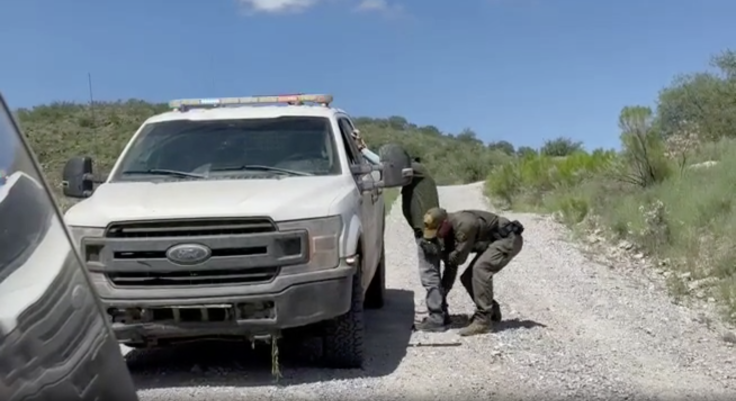
Mexican American author Reyna Grande and director David Damian Figeroa were on the road filming a documentary about humanitarian aid organization Samaritans, in southern Arizona. They had spent the morning documenting the comes and goes of a makeshift humanitarian relief center at the end of the border wall.
On their way back, Grande, Figeroa and two more passengers were stopped, searched and detained in a caged area of a border patrol's truck.
"This experience was not isolated; it echoes countless stories of others who face similar treatment. It highlights a troubling reality: racial profiling by the Border Patrol is not just an abstract concept; it is an everyday experience for many," said Figeroa, the award-winning director and producer, in an Instagram post sharing his experience at the border.
The incident took place on August 14th, and was caught on camera by the production crew. The independent publication The Border Chronicle reported a full account of the incident, as told by the people present in the car.
The video shows the officer telling Figueroa to share his ID and that he needed to establish citizenship on everyone present. The officer, who was wearing straps on his chest to hold his radio and didn't have a name badge visible, proceeded to pad down Figueroa before moving him to the patrolling truck while a helicopter surveyed the area.

Then, according to the story, the officer asked Grande, an acclaimed author and executive producer, at least three times if she was an American citizen. She repeatedly confirmed her status, even as the officer was holding on to her passport. Grande was asked to self-frisk before being escorted next to Figueroa. They are both locked in the vehicle, windows up and no air conditioning, for at least 15 minutes.
"It was definitely pretty traumatizing for me," Grande, who crossed the border as a child, told The Border Chronicle. "Part of me knew something like that could happen [while working on the border]. That was the risk I was taking. And it gave more insight into what Latinos risk. How they racially profile. How there is a risk in being detained."
The U.S. Department of Justice Racial Profiling Guidance, established under the Obama administration in 2014, allows for race and ethnicity to be used "when a compelling governmental interest is present, and only in a way narrowly tailored to meet that compelling interest." The DOJ explicitly allows multiple immigration agencies to profile individuals, including U.S. Border Patrol enforcement activities not in the vicinity of the border.
Speaking of these practices, an official for the Department of Homeland security told The New York Times in 2014, a few days ahead of the release of the guidelines, that they couldn't do their "job without taking ethnicity into account. We are very dependent on that." These practice is still used today.
"I refuse to accept the profound unfairness in being judged not by my character or contributions but by the color of my skin," Figueroa continued. " This experience reinforces my commitment to storytelling, to illuminating the human experience beyond the confines of racial stereotypes. Uplifting the contributions and struggle of migrants and immigrants!"
© 2025 Latin Times. All rights reserved. Do not reproduce without permission.




